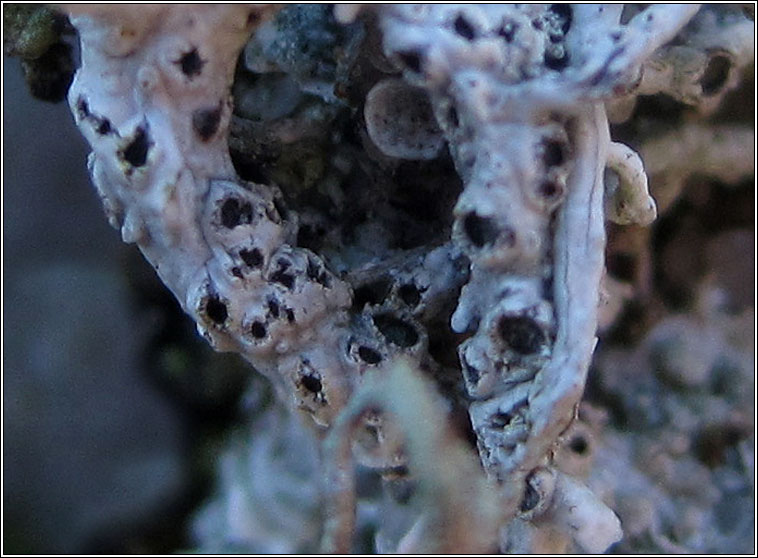
When dealing with mature specimens, Ramalina farinacea (left) can usually be readily distinguished from Evernia prunastri (right) and learning to separate them is a good exercise for beginners and improvers.
Thread.
Thread.

Evernia has a slightly matt texture (perhaps like fine tissue) whereas Ramalina is more cartilaginous (as if moulded in plastic). The undersides of Evernia branches are usually starkly different (white) to the upper side. In Ramalina underside similar or only slightly paler. 

The soralia of Ramalina farinacea are usually neatly oval in shape and restricted to edges of branches. The soralia of Evernia are irregular in shape and are not restricted to edges of branches. 

Immature and stunted specimens can present problems for identification. Stimulated by a twitter query, I have found a way of distinguishing the pair with a simple test as explained in this thread:
https://twitter.com/obfuscans3/status/1485569943034806274
The test involves applying a little spot of K (potassium hydroxide solution) then shining UV light on the spot once it has dried. So far specimens of Evernia always give a bright yellow fluorescence while Ramalina spp. do not fluoresce after application of K.
• • •
Missing some Tweet in this thread? You can try to
force a refresh






















